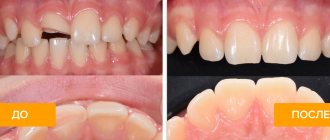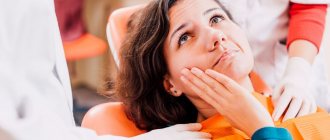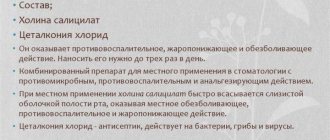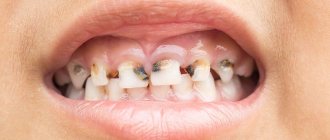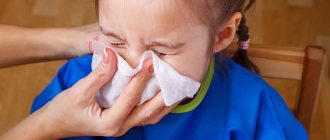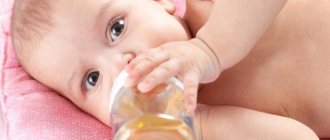One of the most common reasons for patients visiting dental clinics is traumatic damage to teeth and surrounding tissues. At any age, a tooth bruise can occur - a painful injury, which, despite the discomfort, at first looks quite harmless. Subsequently, it often turns out that the pain does not subside, and the bruised tooth begins to react to hot or cold. This usually means that the neurovascular bundle—the dental pulp—is damaged, and a visit to the dental office is necessary.
Even a very careful adult can get a severe bruise to a gum or tooth (for example, by not calculating the movement and hitting himself with a spoon or glass). What can we say about kids who are constantly on the move and often fall, hitting their teeth on various objects. As a result, enamel cracks, root fractures, dislocations and other injuries occur. In the ICD (International Classification of Diseases), chapter 29 is devoted to dental injuries, which describes the consequences of single or multiple mechanical impacts leading to disruption of the integrity of teeth and surrounding tissues.
Main reasons
Dental injuries can occur for various reasons, the most common of which are:
- accidental impact of the jaw on a hard object during a fall or in an accident;
- a blow to the front teeth with a glass, spoon or other utensil (sometimes such blows are so strong that they break off part of the incisor);
- a blow to the teeth with a fist or other blunt object (a professional injury that often occurs among fighters of various martial arts);
- chronic injuries associated with a person’s habits or lifestyle (tendency to bite nails, bite pens, frequent consumption of sunflower seeds, cracking pistachios and other relatively soft nuts with teeth);
- damage during the treatment of adjacent teeth (severe tooth bruising can occur both due to a dentist’s mistake, and due to the anatomical features of the patient, advanced diseases and other factors).
The likelihood of enamel fracture and other traumatic damage to dental tissue increases significantly with poor oral care and dental health. In this case, the enamel becomes more fragile, and the initial stages of caries may develop, significantly weakening the tooth. Timely treatment and proper oral health care significantly reduce the risk of injury to teeth as a result of a blow or other physical impacts.
Possible pathologies
If a child’s gums turn blue or black, this may be a consequence of anemia, gingivitis and stomatitis, and not the actual eruption of baby teeth.
If the black or blue areas of the gums are more than 2 cm, you need to see a doctor. A black hematoma indicates stagnant blood. A bruise this large can cause high fever and pain. Treatment in this case will be an incision in the blue gum, from which the blood is released. It is necessary to ensure that it does not become infected and suppuration begins.
Causes and symptoms of gum discoloration independent of tooth growth:
- A symptom of anemia is a change in the color of mucous membranes. This disease is caused by a decrease in hemoglobin levels. Other signs: decreased appetite and cold extremities. A bluish tint will appear near the lips, eyes and nose. This condition occurs in children due to a lack of iron in the body.
- Gingivitis is an inflammation of the mucous membrane of a child. Usually manifests itself with poor oral hygiene. The gums turn blue, bleed and itch. When teeth come in, the gums are injured, and the wound can fester.
- With stomatitis, not only the gums are blue, but also the entire oral cavity. Stomatitis is similar to gingivitis and develops against the background of a child’s weakened immune system. Ulcers may appear.
Symptoms of a tooth bruise
Depending on how long and intensely the tooth hurts after a bruise, one can draw conclusions about the severity of the injury.
Often, immediately after the blow, it seems that the pain gradually subsides and will soon go away completely. However, over time, the discomfort only intensifies, and when pressure is applied to the tooth itself or the gum next to it, the pain can become unbearably strong. In addition to pain, the following symptoms may be observed:
- the gums in the area of the bruised tooth swell, a hematoma or edema appears;
- the tooth may acquire a reddish tint due to blood released into the pulp from ruptured vessels;
- bruising of the front teeth can lead to noticeable loosening of individual incisors (it seems to the person that the tooth does not hold well and may fall out);
- Over time, the crown may noticeably darken due to disruption of the nutrition of dental tissues and the penetration of pollutants into enamel cracks.
Any of the listed symptoms is a serious enough reason to contact a dental clinic as soon as possible. Painful sensations always indicate the presence of damage, which can eventually lead to the loss of a healthy-looking tooth.
How to avoid hematoma
It is impossible to completely protect yourself from bruising your gums. It is worth trying to strengthen the tissue structures of the oral cavity. First you need to learn how to brush your teeth correctly, in order to not only clean them of plaque, but also massage the soft tissues. Dentists advise using whitening toothpastes once a week.
It is useful to take a course of vitamins, especially in the off-season. The lack of useful microelements negatively affects the condition of teeth and gums.
The main method of prevention is systematic visits to the dentist. Preventive examinations allow you to promptly notice diseases of the oral cavity and prevent their aggravation. It is enough to carry out this event once every six months, and inflammation of the teeth and gums will not bother you.
If bruises are caused by other diseases, it is also better to treat them in a timely manner. It is important to alert your dentist to problems with blood pressure or blood clotting.
With the right approach to your health and a timely visit to a periodontist, a bruise on your gums will not cause any particular trouble. Reasonable use of medications and folk remedies will allow you to quickly get rid of a bruise, avoiding dangerous complications.
Tooth bruise - what to do?
Please note that it is impossible to determine the severity of the injuries yourself. A complete diagnosis must include an x-ray and a professional examination in a dental office. At home, an experienced dentist can examine the damage and make certain assumptions, but even without the necessary tools, he will not be able to make an accurate diagnosis.
If it is obvious that the tooth bruise is quite serious, self-treatment is unacceptable. To ease the pain, you can apply ice or just a cold object and go to the dentist as quickly as possible. If it looks like the jaw is damaged, it is advisable to fix it with a bandage. It is advisable that someone accompany the victim, since he may lose consciousness on the road.
What actions should be taken if a child suffers an injury to a baby tooth?
Let's start with the fact that injury is always pain. It would seem that baby teeth will change anyway... Why pay attention to them? Believe me, it is necessary and necessary to pay attention. If you do not contact pediatric dentistry for treatment of baby teeth, then in the future there is a risk that the infection that has affected the baby tooth will damage the germ of the permanent tooth. If you do not pay attention to the injury of a baby tooth, you may not see the damage in the bud of a permanent one.
Children, by nature, have very mobile and active behavior and lifestyle. This is wonderful! But sometimes they do not hear or perceive the warnings of adults aimed at ensuring safety. This leads to various injuries, often associated with teeth. When the question concerns the injury of a baby tooth, you can often treat the moment negligently with the expectation that it is still temporary and would have fallen out anyway.
Don't leave the situation to chance! Even if the injury affected a baby tooth, which was about to fall out anyway. The fact is that the force of a blow is sometimes impossible to estimate. Under the milk tooth is the germ of a permanent one. It is often impossible to conduct even a visual inspection on your own, not to mention what kind of trauma was caused to the gum and, possibly, the germ of a permanent tooth.
In a situation where there is an injury to a child’s tooth(s):
- Stay calm (although this is sometimes difficult in practice). If you are nervous, children will absolutely sense the mood, especially of loved ones.
- Do not scold your child under any circumstances (“I told you, I warned you!”) Do not forget that he is already in pain and scared. All educational moments and lessons from the situation can be raised later, after the pain has calmed down.
- Show maximum care and tenderness, reassure as much as possible.
- It is imperative to visit a dentist for an examination and consultation and conduct a diagnosis of dental treatment. When you call your clinic or the nearest one (at your discretion), DO NOT ask if a pediatrician is working today, DO NOT say that you need a pediatric dentist. It must be said directly that the child has suffered a tooth injury and needs an urgent examination by a doctor. In every decent clinic they should offer you to come right away, regardless of the doctor’s appointment, and they may warn you that you will have to wait. Or, at a minimum, they are obliged to offer: “wait, I’ll clarify what we can do for you, leave your contact phone number and we will call you back in the next 5-20 minutes.” In this case, they will offer to drive to the clinic or direct you where you can go directly at this moment. If they immediately answer you: “We’re all busy, we can’t help you,” don’t ever go to this clinic.
What the doctor will do at the appointment:
- Visually examine how serious or minor the injury is.
- Be sure to take a photo in the area of the injured tooth(s) to understand whether the permanent tooth(s) are damaged or not.
- He will remove the injured tooth so that it does not cause pain and inconvenience. If the blow was not severe and the tooth was only chipped, if recovery is possible, the pediatric dentist will cure it.
- If necessary, provide recommendations for care in the area of injury.
- As planned, he will make an appointment for the child to be examined by a pediatric dentist if it was not possible to get to him on the day of the injury.
Any experienced dentist will be able to visually and with the help of X-ray diagnostics assess how serious the injury is or whether everything was just a minor fright. Don't leave injuries unattended!
Treatment
Oral injuries can vary in nature and severity. No matter how painful a tooth bruise seems, treatment must be carried out in a specialized dental clinic. We at Natadent often encounter such cases. After the initial diagnosis, visual examination, interviewing the patient and collecting anamnesis, an x-ray is taken - this is the only way to clearly determine which tissues are damaged and prescribe the correct treatment.
By studying an x-ray, the doctor can determine what kind of damage the tooth has received (this could be a fracture, dislocation, crack, various deformations and other pathologies).
Only after a correct diagnosis can treatment be prescribed. If a tooth injury has caused serious damage, electrodiagnostics is prescribed - a special procedure that allows you to determine the condition of the pulp, detect hemorrhages and necrotic areas in it. If diagnostic actions show that the damage is not very serious, a set of preventive measures is prescribed, which includes:
- application of compresses;
- use of decoctions for mouth rinsing;
- exclusion from the diet of hot dishes and foods that require chewing; exclusion of this area of the dentition from the chewing process by applying a bandage or protective splint.
- taking anti-inflammatory drugs.
If a more serious tooth injury is diagnosed, treatment may include surgery to the structure of the tooth and surrounding tissue. The sequence of actions is determined by the complexity of the injury, but in most cases includes the following steps:
- ;
- Local anesthesia is performed (or general if complex and painful treatment is involved).
- If the pulp sac is damaged, even if the tooth enamel has retained its structure, the doctor drills a hole in it and removes the nerve.
- The canals and cavity are cleaned, treated and filled, as in conventional caries treatment.
;
;
A tooth bruise is a dangerous injury that can lead to undesirable consequences and complications. Even if pulp removal and filling have been performed, it is advisable that the patient undergo a course of therapeutic treatment, and after some time come for additional examination. Only after this can it be said that the consequences of the injury have been completely eliminated and there will be no complications.
Causes of blue gums in adults
The reasons may be different, the most common include:
- problems with the cardiovascular system;
- thyroid diseases;
- kidney pathologies;
- stomatitis;
- inflammatory periodontal diseases: gingivitis, periodontitis or periodontal disease;
- caries and its complications;
- improper orthodontic treatment;
- incorrectly selected or incorrectly manufactured orthopedic design.
- a consequence of surgical intervention (blue discoloration of the periodontium can occur after tooth extraction);
- chemical (exposure to the mucous membrane of an aggressive substance used in the treatment of root canals) or thermal burn (exposure to high temperatures on the gums).
Possible complications
Since bruising of a gum, tooth or other tissues in the oral cavity is always individual, it is impossible to give reliable predictions about recovery and possible complications. It usually takes several visits to the dentist to carry out the necessary examinations and procedures, after which a complete recovery can be established. If you do not approach the treatment process responsibly, you can get the following complications:
- darkening of the enamel (due to the penetration of pollutants through cracks, blood entering the pulp and disruption of the nutrition of dental tissues);
- death of pulp cells and formation of necrotic areas leading to tooth death;
- chronic inflammatory processes (pulpitis and periodontitis) leading to more serious consequences.
Very often, a tooth bruise leads to serious but hidden injuries. The victim may feel minor pain and think that everything will go away soon. However, this is not a reason to avoid qualified medical care. The sooner an examination is carried out in a dental office, the greater the likelihood that all consequences will be eliminated, complications will be avoided and the tooth will be as healthy as possible.
What to do if a child has a lump on his gum near a tooth?
A lump on a child’s gum can have a different appearance, which is well demonstrated by the selection of photos. With such a problem, you should definitely consult a doctor. Self-medication is strictly prohibited. This can only aggravate the pathological process.
Dental specialists will help you understand the causes of compaction on the gums and provide qualified assistance in full. In the clinic, all dental procedures are performed under anesthesia, so the child will not experience negative emotions during treatment. Contact the best dentists! You can make an appointment at the Shifa clinic by phone or through the form on the website.
What can you do as an emergency?
It was already mentioned above that the most common cause of symptoms in childhood is the process of teething or changing teeth. To help your baby endure this difficult and painful period more easily, special ointments and gels with an anesthetic effect will help: “Kalgel” or, for example, “Cholisal”. As a rule, such a problem does not require medical intervention - the process of “punching” the tooth out usually takes several days. To speed up this process, you can resort to the help of special baby teethers. The blue spots will gradually resolve on their own.
If the cause of the blue discoloration is a growing tooth, then the symptoms may resolve on their own
As for other causes of hematoma, including in adults, you cannot do without the help of a doctor. During a visual examination and examination of the clinical picture as a whole, the specialist will determine whether the symptom is a consequence of a disease of the oral tissues, a pathology of the body, or an incorrectly fixed crown. Only after this the doctor will be able to begin treatment. If the problem is gingivitis or stomatitis, then the patient will be prescribed a course of appropriate anti-inflammatory and antibacterial drugs - both for oral administration and for external treatment of the affected areas.
If the problem is the result of an incorrectly installed crown or prosthesis, you will have to completely remove the orthopedic device and undergo anti-inflammatory therapy. The prosthetic device is sent for correction or completely replaced with a new design, which is certainly the best option. When a bruise becomes the result of mistakes made by the doctor during filling, a temporary filling is applied and a course of anti-inflammatory drugs is also prescribed.
Traditional medicine tips
Many medicinal herbs have proven themselves to be excellent in the fight against inflammation in gum tissue. Infusions and decoctions are made from them, which are then used to rinse the mouth several times a day. Antiseptic plants that additionally have pronounced anti-inflammatory properties include chamomile, sage, and oak bark. Some sources provide recommendations for treating the mucous membrane with aloe juice or honey to relieve pain. In order to restore soft tissues after an incorrectly installed orthopedic structure, stimulation of blood circulation is required. A decoction of nettle leaves, as well as propolis ointment, helps with this.
Chamomile infusion is great for rinsing
It is important to understand that any folk recipes can be used only after consultation with the treating specialist. Otherwise, you can provoke the development of a serious complication and only make everything worse. And certainly traditional medicine cannot become a full-fledged alternative to drug therapy. The use of medicinal plants is justified only as an additional measure.
